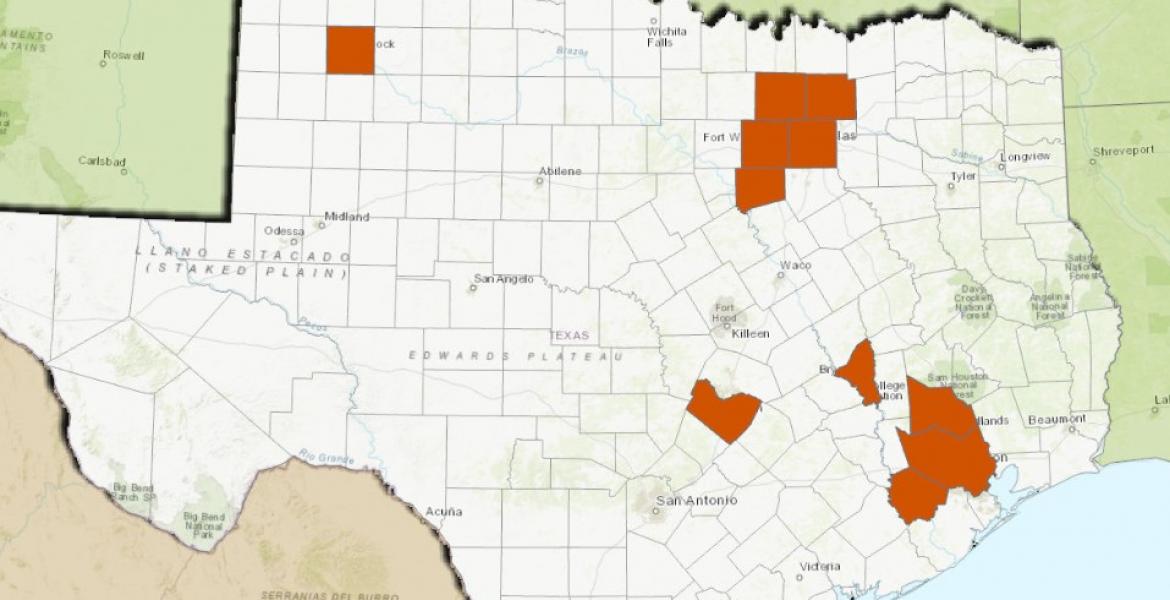SAN ANGELO, TX – According to various professional studies, nearly 10 percent of kids across the U.S. deliberately harm themselves. The tendency to harm begins around puberty, between 13 to 15 years of age, but incidents of self-harm have been reported as early as 6 or 7 years old.
Across social media, many children are posting their self-mutilating acts on YouTube, Facebook, and other popular social media outlets.
During an interview with CBS in 2011, child psychologist Dr. Jennifer Hartsein discussed how self-harm videos posted on social media can influence the behavior of teens engaging in self-harm acts.
“The aim is really to regulate emotion,” she said during the interview. “So that can be through cutting, burning, picking their skin or wounds, any of those things, but they feel something so intensely. The self-injury actually modulates emotion for them rather than a healthier coping mechanism of going running or going to the gym.”
She reiterated that self-harm acts occur mostly among teens, and young women have a higher tendency to self-harm than young men.
Because of this issue with teens, many social media sites have buckled down on removing these types of posts to keep them circulating across the web. However, these sites can’t stop all the tweets or posts teenagers share. Today, experts explain self-harm isn’t just about mental illness, or being suicidal. It’s similar to a teen wanting to try smoking or marijuana for the first time. It's a dose of instant gratification.
Regardless of the reason, self-harm continues to plague today’s teens.
Popular Forms of Self-Harm
According to the Teen Rehab Center, self-harm is referred to as self-mutilation or self-injury.
Sometimes, these self-harm acts can be habitual, and many teens experiment with self-harm as a form of pleasure.
Experts with the American Association for Marriage and Family Therapy (AAMFT) note that cutting and burning are the most common forms of self-harm, whereas pulling out bodily hairs, punching walls, ingesting substances or sharp objects are the least common forms.
Also, locally, one teen who wished to remain anonymous said self-choking, or having a friend choke another friend to the point of passing out is another form of self-harm taking hold. Alcohol and/or marijuana are sometimes added for "a heightened effect."
These acts continue to take place because “many adolescents today are struggling to cope with extreme levels of stress in school, in their families, and in their peer relationships,” said AAMFT experts. “Teens have [also] become vulnerable prey to our highly toxic, media-driven world.”
AAMFT added that, like substance abuse, adolescent self-harming behavior has no one single cause. The behavior crosses all cultural and socioeconomic levels, and the teens who engage in these acts are rarely suicidal. Instead, they are seeking quick relief from emotional distress.
“One major reason why adolescents gravitate towards self-harming behaviors is the endorphin effect,” stated AAMFT experts. “When adolescents cut or burn themselves, endorphins are quickly secreted into their bloodstream, and they experience a numbing or pleasurable sensation.”
These sensations are likened to an actual drug high.
Other reasons teens may self-harm include:
- Feeling emotionally disconnected from or invalidated by parents
- Wanting to fit in with peers
- Needing to feel alive or to help confirm reality
- Using self-harm as a coping strategy
A San Angelo Case
A single parent, who also wished to remain anonymous, explained how he first learned of his youngest daughter’s self-mutilation. She was 13.
This parent said he started noticing a change in his daughter’s behavior. She was more withdrawn than usual, and not her normal “happy-go-lucky” self.
The parent said his daughter was cutting herself, and when he first learned this was the case, he was in shock. He said he felt as if he failed his daughter somehow.
But once the shock wore off, he took action.
“Once I found out what was going on, I got her into counseling immediately, but first I called our pediatrician,” the parent said.
The parent had the doctor check his teenage daughter to make sure she was physically okay, and the pediatrician referred his family to a specialist.
“I was only able to see the cuts on her arm,” the parent said. “The doctor told me she had a proximately 120 cuts and scars total on her entire body: on her arms, and on the inside of her legs—basically, anywhere she could cover up with socks or pants or shorts. We got her into counseling as fast as we could.”
He added that he didn't blame her for what was going on at the time, but just wanted to make sure she was okay. He talked to her to try and understand what she was going through.
The parent noted that he didn't see any physical trauma because she hid the cuts behind bracelets and clothes.
According to the counselor and the reasoning behind the incident, the teenager cut herself as a coping mechanism. It was the only thing in her life that she could possibly control.
“Through counseling and family counseling, we were able to understand what was going on,” said the parent.
What To Look For
Experts say to determine if your child is engaging in self-harm acts, the following are signs to look for:
- The child has unexplained cuts and bruises.
- The child experiences a shift in mood swings.
- The child wears long sleeves and pants all the time, even in warm weather.
- The child has knives, razor blades, box cutters or other sharp objects.
According to various experts, should families find their teens are engaging in self-harm behavior, the best approach to treating this is by doing what the San Angelo parent did when he found out about his daughter. Experts say family therapy can help improve family communication, conflict-resolution and problem-solving skills, and it can help improve relationships between teenagers and their parents overall.
Subscribe to the LIVE! Daily
Required






Comments
Listed By: Doctor Ding-bat
These mentally impaired make up the one half of US voters who threw their votes to Hillary and who are currently skipping classes to either disrupt everyone else's lives by protesting or they're sitting on street corners squirting tears like babies because they're trembling, scared and wetting themselves because they didn't get their way.......
- Log in or register to post comments
PermalinkListed By: S.A. TX RN
Seriously "Dr"?!? This article is not a platform for your political agenda! The people with this disorder deserve more than your flippant & self serving attitude. Lets learn how to take better care of each other instead of shaming, assumptions, & negativity. There are plenty of other places to rant about your political concerns.
- Log in or register to post comments
PermalinkListed By: sanglo expat
Actually, S.A. TX RN, places like this do provide a platform for political statements. Having said that, one should hope that such statements are based on logic and are not simply caused by a poster's desire to post ridiculous garbage without any real thinking behind it.
Doctor Ding-Bat has named him/herself well. The post you attacked was lacking in all ways reflective of value.
- Log in or register to post comments
PermalinkPost a comment to this article here: